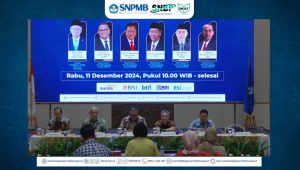Vanadium pentoxide (V2O5) is one of the most important transition metal oxides[19]. It was reported to have an excellent nonlinear optical absorption characteristic and thus suitable for SA applications[20]. In this letter, a Q-switched EDFL is obtained by means of the newly developed V2O5 SA. The SA was prepared by the embedding of V2O5 material into polyethylene glycol (PEG) to compose a film absorber, which was then inserted between two fiber ferrules. The stable Q-switched laser was successfully achieved with maximum repetition rate, minimum pulse width and highest energy are recorded at 128.2 kHz, 7.81 μs and 3.2 nJ, respectively.
Method and Results
For this work, the ammonium metavanadate (NH4VO3) compounds were used as a raw material. They were purified by using a standard chemical reaction to obtain V2O5 compounds. In the process, 20 g of NH4VO3 was dispersed in deionized water (500 mL). Then, a tiny amount of Triton X-100 surfactant (about 0.1 g) was added in the solution and the mixture was stirred at 90 °C for 1 h. HNO3 with 35% concentration was slowly dropped into the mixture to acidify the solution. After leaving the mixture overnight, the dark brown precipitates were obtained. They were gathered and then washed in deionized water to get rid of any traces of surfactant and acid. The precipitates were then dried in hot air oven for 12 h at a constant temperature of 90 °C. Finally, dried powder was crushed and calcined at 500 °C for 5 h in a box furnace to form yellowish-brown V2O5 compound. X-ray diffraction (XRD) was then used to investigate the phase purity and structural crystallinity of V2O5 as shown in Fig.1(b). The XRD profile reveals shape peaks at various 2θ positions. The peaks at 51.3°, 47.4°, 34.4°, 32.4°, 31°, 26.2°, 21.7°, 20.3° and 15.4° positions relate to the lattice planes of (002), (600), (301), (011), (310), (101), (110), (010) and (200), respectively. These peaks indicate orthorhombic crystal phase of V2O5 with no impurities.
After inserting the V2O5-PEG SA, a continuous wave laser was firstly generated when the power of pump laser reached 40 mW. As the laser diode’s power was further boosted to 110.9 mW, the EDFL starts to deliver a train of Q-switched pulses. The laser wavelength is centered at 1 562.4 nm with a 3-dB bandwidth of 0.4 nm. The corresponding RF spectrum, which indicates that the repetition rate of the pulses is 97.2 kHz at 138.7 mW pump power. The signal-to-noise ratio of the fundamental frequency is observed to be higher than 45 dB, which confirms the stability of such Q-switched operation. The result shows typical oscilloscope traces at pump powers of 110.9 mW, 138.7 mW and 166.5 mW, respectively. As seen, all pulses trains have a uniform profile and intensity. The pulse periods are given as 10.90 μs, 10.29 μs and 7.82 μs, which correspond to repetition rates of 91.7 kHz, 97.2 kHz and 128.2 kHz, respectively.
In conclusion, Q-switched pulses were succesfully demonstrated in EDFL cavity using the new SA based on V2O5 film. The SA was obtained by embedding the synthesized V2O5 into a PEG polymer film. It has a modulation depth, saturation intensity and non-saturable loss of about 7%, 90 MW/cm2 and 49% respectively. Q-switching operation was obtained from pump power range of 110.9—166.5 mW. The pulse repetition rate indicates an increasing trend from 91.7 kHz to 128.2 kHz, whereas the pulse width shows a decreasing trend from 10.90 μs to 7.81 μs. The highest pulse energy of 3.2 nJ is obtained at pump power of 166.5 mW. The V2O5 SA device has advantages in terms of ease fabrication, robustness and stability, and thus it has promising potential for various mesaurement and optical communication applications.
Author: Prof. Dr. Moh. Yasin, M.Si.
Detailed information from this research can be seen on our article at:
https://www.springer.com/journal/11801
Vanadium pentoxide film for microsecond pulse generation in 1.5-μm region., Mohamad F. Baharom, Salam M. Azooz, Ahmad H. A. Rosol, Moh Yasin, and Sulaiman Wadi Harun. https://doi.org/10.1007/s11801-022-1101-2








